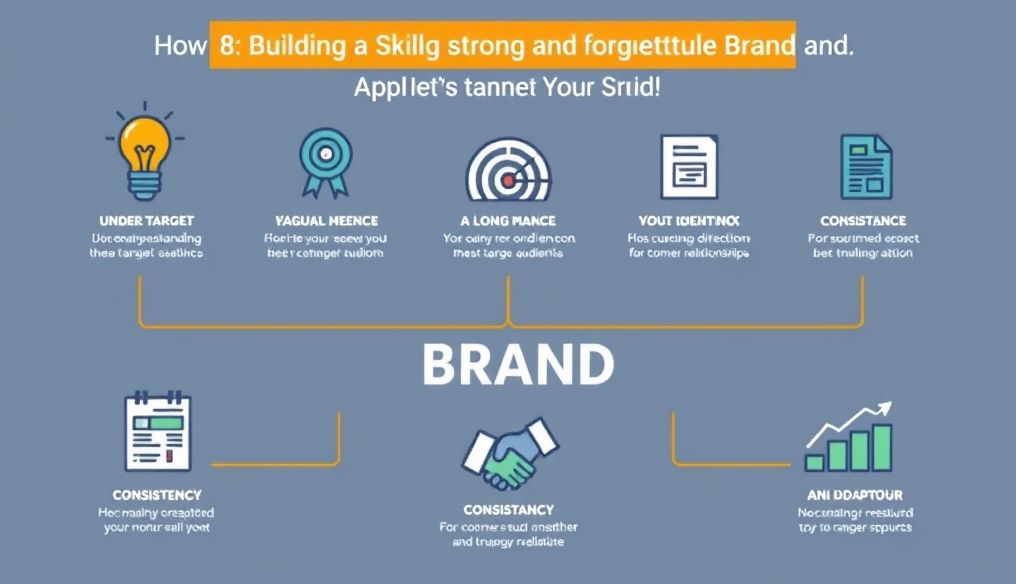What are the essential elements of a successful business plan and how can we ensure its achievement?
A business plan is a vital document that defines the direction and future of any business venture, whether it's a startup or an established company. It serves as a detailed roadmap outlining the objectives, strategies, and tactics needed to achieve success. Without a strong business plan, a project is prone to failure due to inadequate planning, lack of funding, and a poor understanding of the market.
A successful business plan consists of several essential elements, each playing a crucial role in ensuring the achievement of the desired goals. In this article, we will explore these elements in detail and provide practical tips on how to develop an effective business plan.
1. Executive Summary: The Important First Impression
The executive summary is the first thing potential investors or lenders read, so it must be concise, engaging, and persuasive. It should provide a comprehensive overview of the entire business plan, focusing on key points and main objectives. The executive summary should include the following elements:
- Brief Company Description: What is the company and what does it do?
- Mission Statement: What is the purpose of the company?
- Main Objectives: What does the company aim to achieve?
- Market Summary: What is the size of the target market?
- Competitive Advantage: What distinguishes the company from its competitors?
- Financial Summary: A summary of expected revenues and expenses.
- Funding Request (if needed): The amount of funding required and how it will be used.
Tip: Write the executive summary after you have finished writing the rest of the business plan. This will ensure that the summary accurately reflects the full content of the plan.
2. Company Description: Who We Are and What We Do
This section provides a detailed description of the company, including its history, legal structure, and products or services. This section should clearly explain:
- Company History: When was the company founded and how has it evolved?
- Legal Structure: Is the company a sole proprietorship, LLC, or corporation?
- Mission and Vision Statement: What is the purpose of the company and what is its vision for the future?
- Products or Services: A detailed description of the products or services offered by the company.
- Location: The company's location and its relationship to the target markets.
Example: If the company offers a smartphone app, the section should describe the app's features, benefits, and how it solves a specific problem for users.
3. Market Analysis: Understanding the Competitive Environment
Market analysis is a crucial element of the business plan, as it demonstrates the company's understanding of the target market and competitors. This section should include:
- Market Size and Growth: What is the size of the target market and how is it growing?
- Market Trends: What are the main trends affecting the market?
- Target Audience: Who are the potential customers and what are their needs?
- Competitors: Who are the main competitors and what are their strengths and weaknesses?
- SWOT Analysis: Analysis of the strengths, weaknesses, opportunities, and threats facing the company.
Tip: Use reliable data from external sources such as market research studies and industry reports to support your analysis.
4. Organization and Management: The Leadership Structure
This section explains the organizational structure of the company and how it will be managed. It should include:
- Organizational Structure: A chart showing the relationships between different departments and employees.
- Management Team: Information about the experience and qualifications of the management team members.
- Roles and Responsibilities: A detailed description of the roles and responsibilities of each individual in the team.
- Board of Directors (if applicable): Information about the members of the board of directors and their role in guiding the company.
Example: If the company is a startup, the section should focus on the experience and skills of the founders that will contribute to the company's success.
5. Services and Products: The Value Proposition
This section focuses on the products or services offered by the company and how they meet customer needs. It should include:
- Detailed Description of Products or Services: A detailed explanation of the products or services offered by the company.
- Features and Benefits: What are the key features of the products or services and how do they benefit customers?
- Product Life Cycle: At what stage of the product life cycle are the products or services?
- Patents and Intellectual Property Rights: Does the company have any patents or intellectual property rights that protect its products or services?
- Research and Development: What are the company's plans for research and development to improve existing products or services or develop new products?
Tip: Focus on the value that the products or services provide to customers, not just the technical features.
6. Marketing and Sales: Reaching Customers
This section explains how the company will market its products or services and how it will sell them. It should include:
- Marketing Strategy: How will the company reach the target audience?
- Marketing Channels: What marketing channels will the company use (such as social media, online advertising, public relations)?
- Pricing Strategy: How will the company determine the prices of its products or services?
- Sales Strategy: How will the company sell its products or services (such as direct sales, online sales, wholesale)?
- Marketing Budget: How much will the company spend on marketing?
Example: If the company is targeting young people, the marketing strategy may focus on social media and influencer marketing.
7. Operational Plan: How to Execute the Work
The operational plan describes how the company will produce its products or provide its services. It should include:
- Production Process: How will the company produce its products?
- Suppliers: Who are the company's main suppliers?
- Equipment and Facilities: What equipment and facilities does the company need?
- Inventory Management: How will the company manage its inventory?
- Quality Control: How will the company ensure the quality of its products or services?
- Distribution and Logistics: How will the company distribute its products?
Tip: Visit potential production sites or talk to potential suppliers to get realistic information.
8. Financial Plan: The Numbers Speak
The financial plan is one of the most important parts of the business plan, as it demonstrates the financial viability of the project. It should include:
- Financial Projections: Projections for revenues, expenses, profits, and losses for the coming years.
- Cash Flow Statement: A statement showing the movement of cash in and out of the company.
- Balance Sheet: A statement showing the company's assets, liabilities, and equity.
- Break-Even Analysis: An analysis showing the point at which the company begins to make a profit.
- Financial Assumptions: An explanation of the assumptions on which the financial projections are based.
- Funding Request (if needed): The amount of funding required and how it will be used.
Tip: Consult an accountant or financial advisor to help prepare the financial plan.
9. Appendices: Supporting Documents
The appendices are an optional section of the business plan that includes supporting documents such as:
- Resumes of the Management Team: Detailed information about the experience and qualifications of the management team members.
- Market Research Studies: Copies of the market research studies that the company used in its market analysis.
- Letters of Recommendation: Letters of recommendation from potential customers or partners.
- Lease or Purchase Agreements: Copies of lease or purchase agreements for buildings or equipment.
- Licenses and Permits: Copies of the licenses and permits required to operate the company.
Tip: Include only the documents that support the business plan and add value to it.
10. Continuous Review and Update: A Dynamic Plan
The business plan is not a static document, but should be reviewed and updated regularly to reflect changes in the market and competitive environment. The company should establish a timeline for review and update, and should be prepared to adjust the plan as needed.
Tip: Review the business plan at least once a year, or more often if there are significant changes in the market or the company.
Conclusion: A successful business plan is a powerful tool that helps companies achieve their goals. By including the essential elements mentioned above, companies can increase their chances of success and attract potential investors and lenders.




